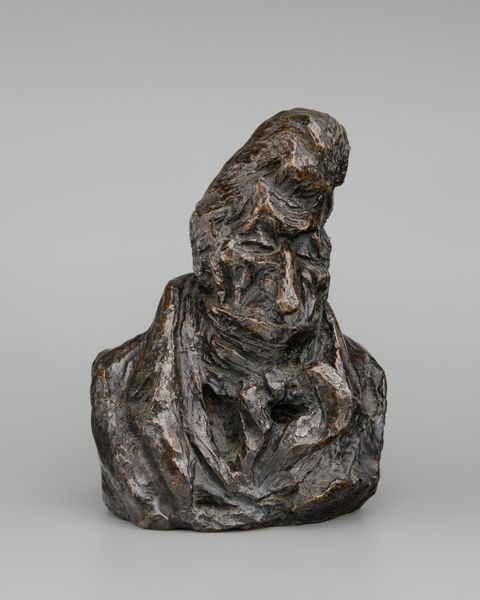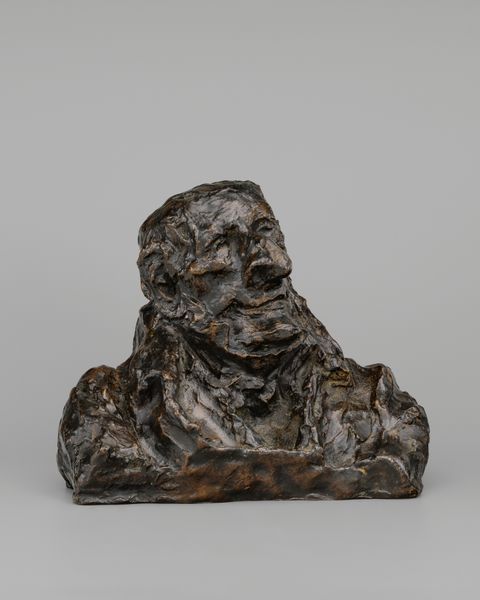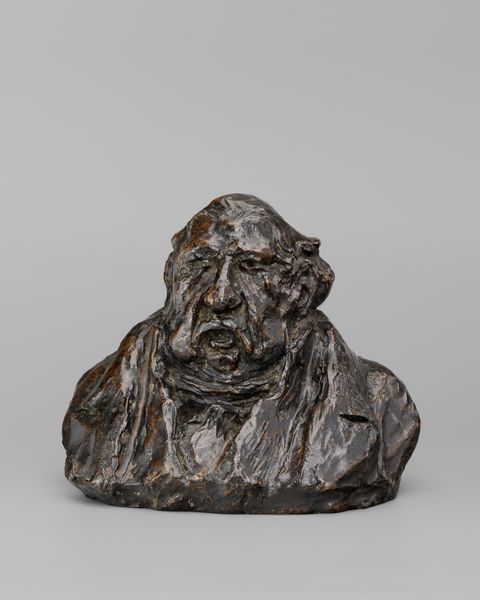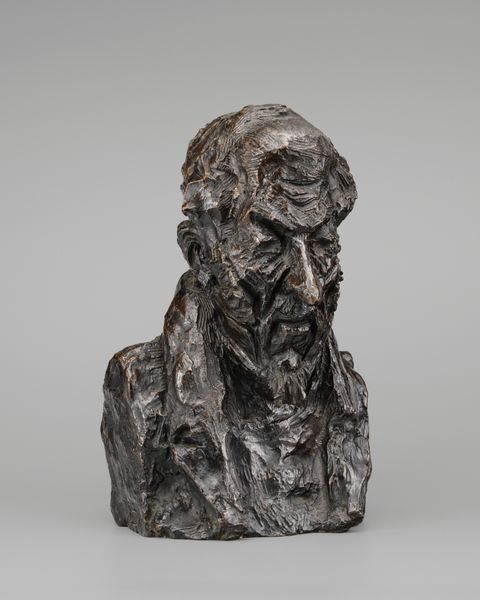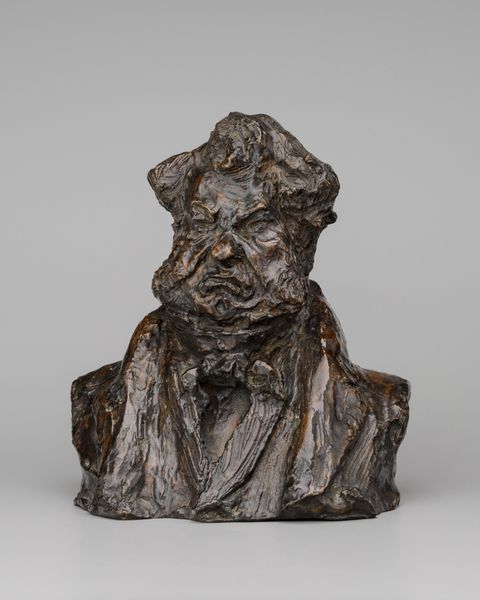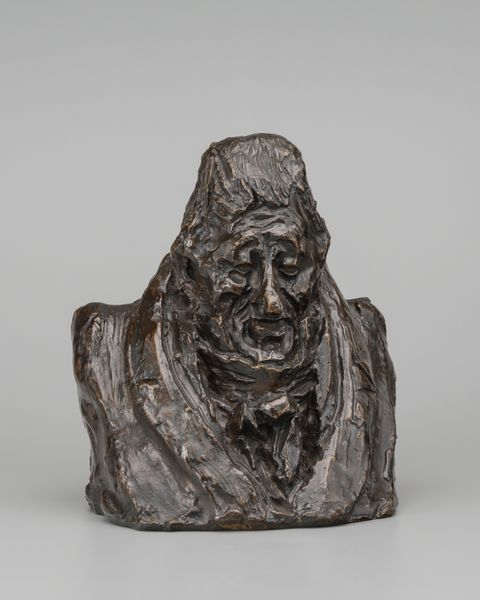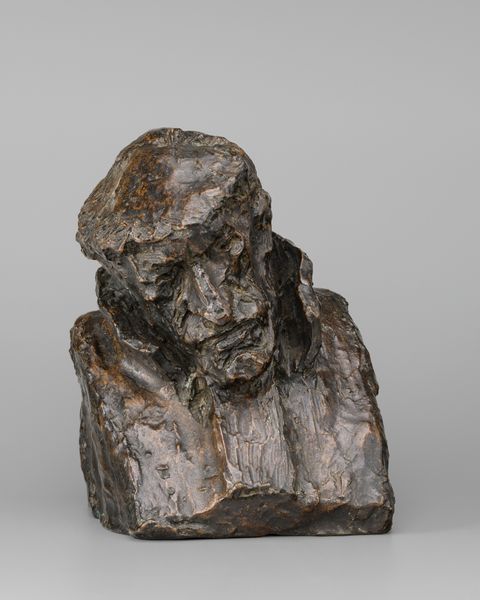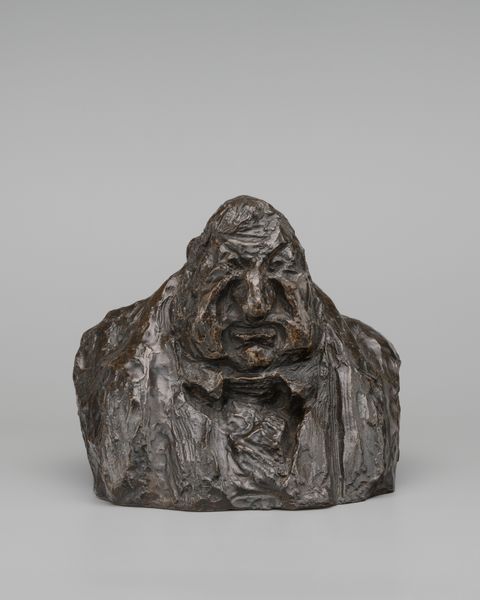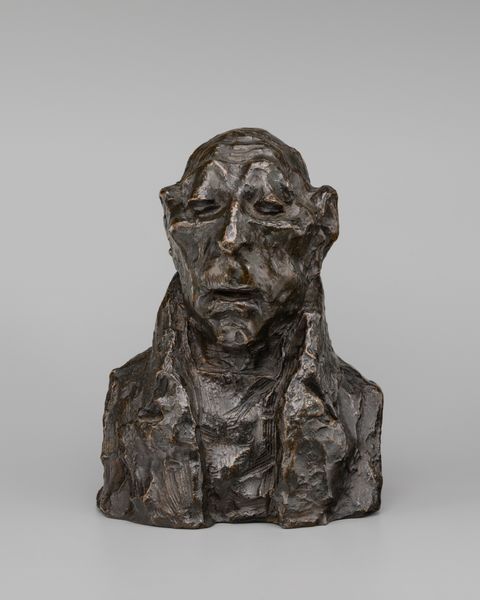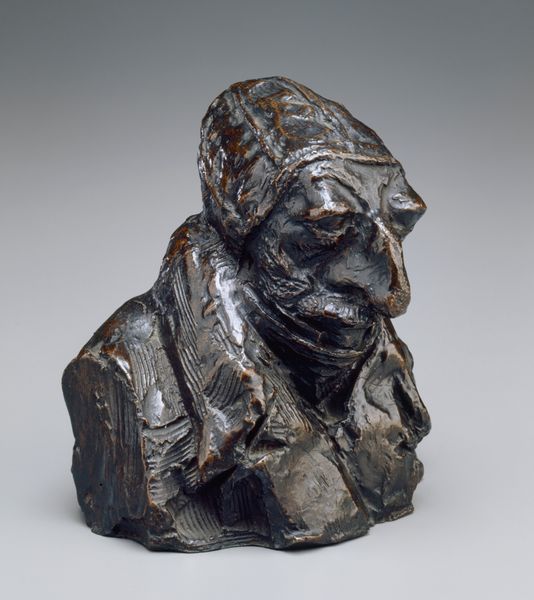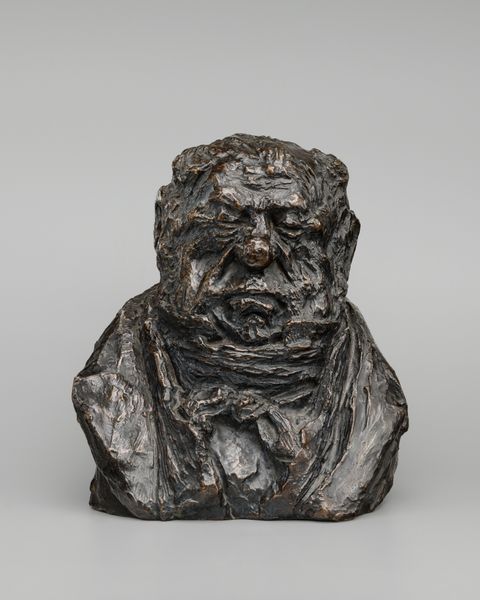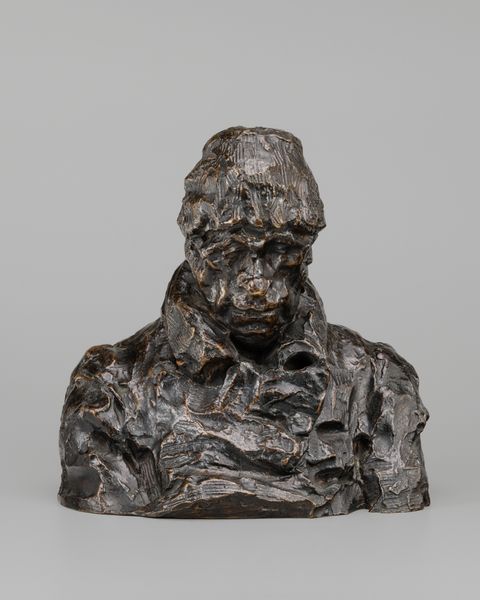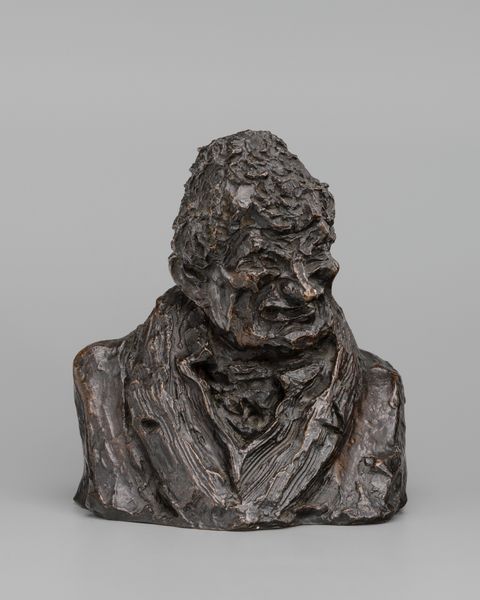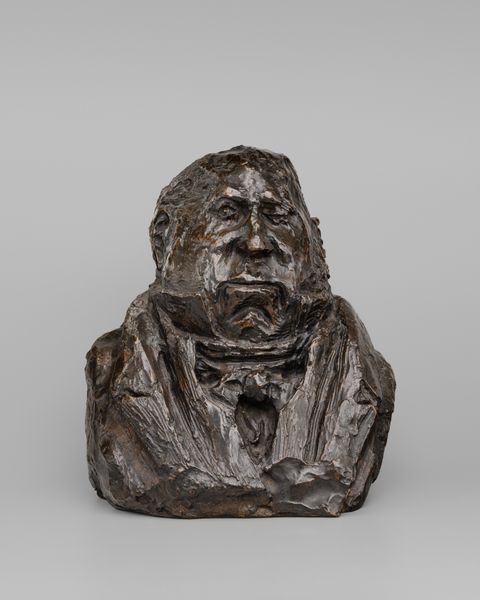
Buste van baardige, oude man met muts, waarvan de rand naar boven is omgeslagen c. 1580s - 1590s
0:00
0:00
giambologna
Rijksmuseum
bronze, sculpture
#
portrait
#
bronze
#
mannerism
#
figuration
#
sculpting
#
sculpture
#
history-painting
Dimensions: height 6.0 cm, width 4.5 cm, depth 5.0 cm
Copyright: Rijks Museum: Open Domain
Editor: This is Giambologna’s bronze bust, "Bust of Bearded Old Man with Cap, with the Edge Turned Up," dating from the 1580s or 90s, and it's at the Rijksmuseum. It's strikingly aged and wise... What do you make of this particular piece? Curator: It's interesting to consider this work through a lens of power and representation. Who had the power to be sculpted, and how does Giambologna’s depiction reinforce or subvert societal norms? Note how the bronze, a precious material, elevates the sitter. Is this a study of an individual, or a generalized depiction of old age and wisdom, and what does that choice mean for the figure represented? Editor: That's a fascinating way to frame it. It wasn’t just *anyone* being immortalized in bronze. But, he almost looks like a commoner. The cap seems to imply that. Curator: Exactly! The "common" cap alongside the precious bronze creates an interesting tension. Does this choice challenge the existing power structures by granting dignity to an elder, perhaps an everyman, thus elevating him? Or does it reinforce those structures by, perhaps, casting someone outside the elite in bronze to send a message? How does the Mannerist style play into that reading? Editor: The Mannerist style is about drama and exaggeration. Is Giambologna amplifying the commonness of this figure to make some point about…what? Social mobility? The value of everyday people? Curator: Perhaps. Consider also the gaze. Is it confrontational? Defiant? Downcast? Who is he looking at, and what is he communicating non-verbally? Think about what social status implies. He’s literally “looking down” from his bronze pedestal, so to speak. Editor: I never thought about a sculpture having a "gaze" in the same way as a painted portrait. I now think Giambologna encourages the viewer to rethink their own assumptions of hierarchy and representation. Thanks. Curator: Exactly! Seeing art as a dynamic social mirror allows us to better grasp the art of the past and create the art of the future.
Comments
No comments
Be the first to comment and join the conversation on the ultimate creative platform.
